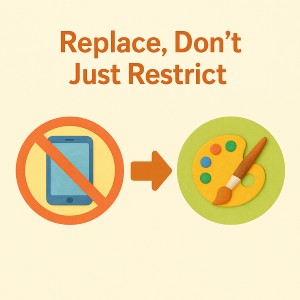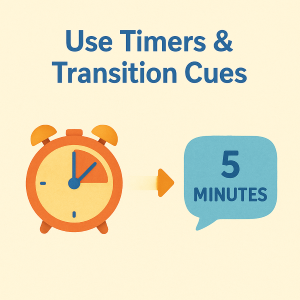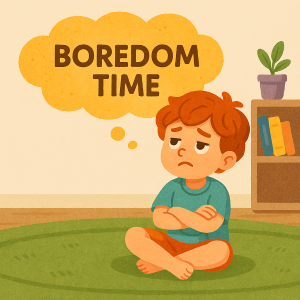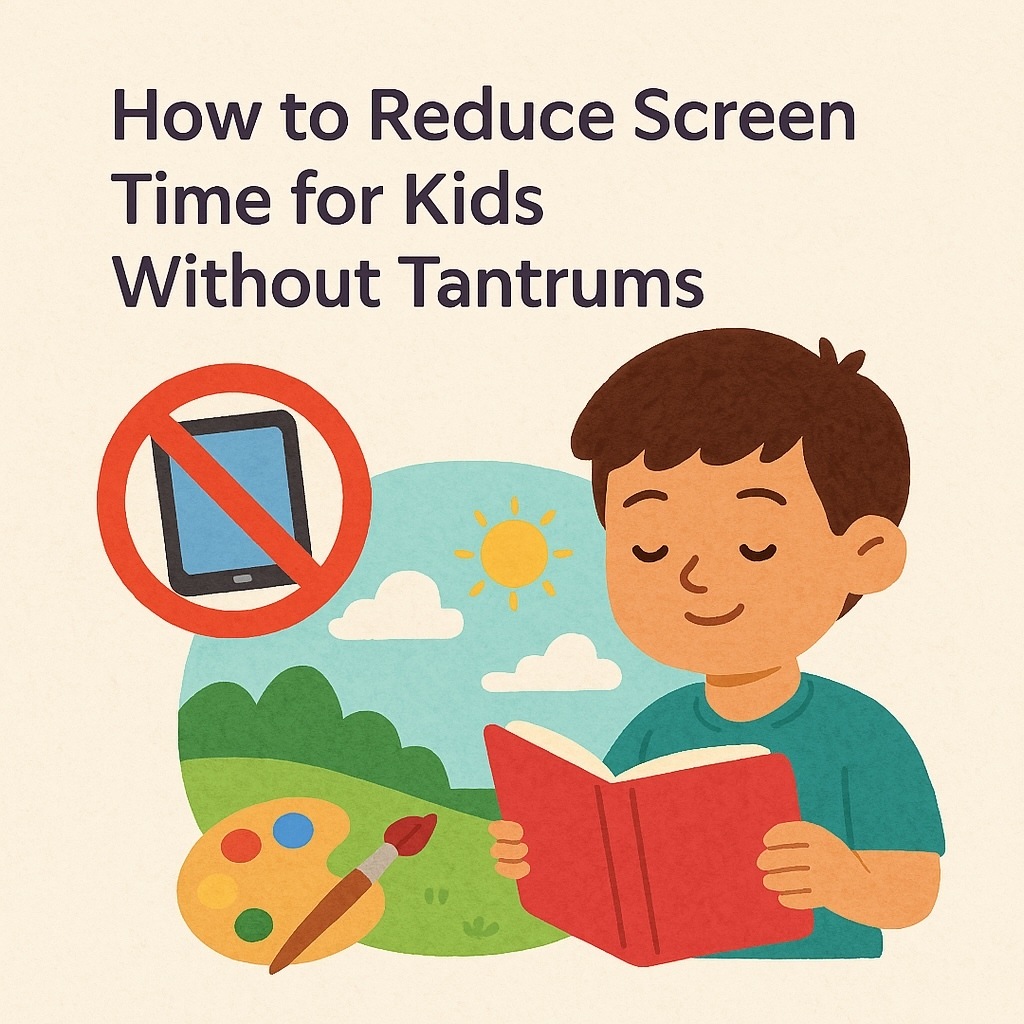In today’s digital world, screens are everywhere—from online classes and video calls to cartoons and games. While technology has its benefits, excessive screen time can affect kids’ physical health, social skills, and sleep patterns.
But if you've ever tried to cut back screen time, you know it’s not easy—especially without triggering tears, tantrums, or protests. The good news? With a few smart strategies, you can reduce screen time gently, without making it feel like a punishment.
Here’s how to do it—without the meltdowns.

1. Set Clear & Consistent Screen Time Rules
Start by defining how much screen time is allowed each day, and stick to it.
-
For kids aged 2–5: Limit screen time to 1 hour/day of high-quality content (as per WHO).
-
For older kids: Balance screen time with school, play, and rest.
Make rules visible—use a chart or family screen-time agreement so everyone’s on board.

2. Replace, Don’t Just Restrict
Simply saying “No more TV” isn’t enough. You need to offer better alternatives.
Try these fun swaps:
-
Outdoor play or a nature walk
-
Drawing, painting, or crafts
-
Storytime or library visits
-
Board games or puzzles
-
Music and dance sessions
Explore BeeBuddy’s curated list of offline hobby classes and workshops that your child can enjoy instead.

3. Use Timers & Transition Cues
Many tantrums happen when screen time ends suddenly. Help your child prepare for transitions:
-
Use a visual timer or countdown
-
Give a 5-minute heads-up before turning off the screen
-
Say: “When this episode ends, it’s time for snack/playtime.”
This builds routine and avoids emotional outbursts.

4. Create Tech-Free Zones at Home
Designate certain areas of your home as screen-free zones, such as:
-
Dining table
-
Bedrooms
-
Study areas
Encourage other activities in these areas—like reading corners or LEGO tables—to keep kids creatively occupied.

5. Model Healthy Tech Habits Yourself
Children mirror what they see. If they notice you glued to your phone, they'll resist screen limits too.
-
Take screen breaks together
-
Read a book while they color
-
Join them in non-digital play
Be the example they can follow.

6. Use Screens Wisely When Allowed
All screen time isn’t equal. Shift your focus from quantity to quality:
-
Choose educational or interactive content
-
Co-watch and discuss the content
-
Avoid screen time during meals or 1 hour before bedtime
Apps like YouTube Kids or parental controls can help manage usage.

7. Introduce “Boredom Time”
Allow kids to feel bored—yes, it’s okay! That’s when creativity kicks in.
Give them the space to:
-
Invent their own games
-
Write stories or draw
-
Build with blocks or kitchen items
Soon, they’ll stop asking for screens out of habit.

8. Enroll in Engaging After-School Activities
One of the best ways to keep children away from screens is by filling their time with things they love.
Explore:
-
Art, dance, or music classes
-
Sports academies or martial arts
-
Nature walks or book clubs
BeeBuddy makes it easy to find nearby activities that match your child’s interests.
Final Thoughts
Reducing screen time isn’t about being strict—it’s about creating a balanced lifestyle where screens don’t replace imagination, outdoor play, or real-world interaction. Start with small steps. Be consistent. And most importantly, keep it fun and positive. Looking for creative alternatives to screen time?
Check out BeeBuddy’s curated list of after-school classes and weekend workshops in Delhi NCR.







.jpeg?width=900&height=400&name=WhatsApp%20Image%202025-05-13%20at%202.56.34%20PM%20(1).jpeg)
.jpeg?width=900&height=400&name=WhatsApp%20Image%202025-11-03%20at%209.56.38%20AM%20(1).jpeg)









.jpeg?width=900&height=400&name=Skillful%20Minds%20%20-%20%20Chess%20Classes%20(%20Punjabi%20Bagh%20).jpeg)
.jpeg?width=900&height=400&name=WhatsApp%20Image%202025-11-28%20at%2012.08.09%20PM%20(3).jpeg)








.jpg?width=900&height=400&name=KLAYArtsPrograM%20(1).jpg)



.jpeg?width=900&height=400&name=STUDIO%20SMAC%20-%20ODISSI%20DANCE%20CLASSES%20(%20NOIDA%20).jpeg)






















